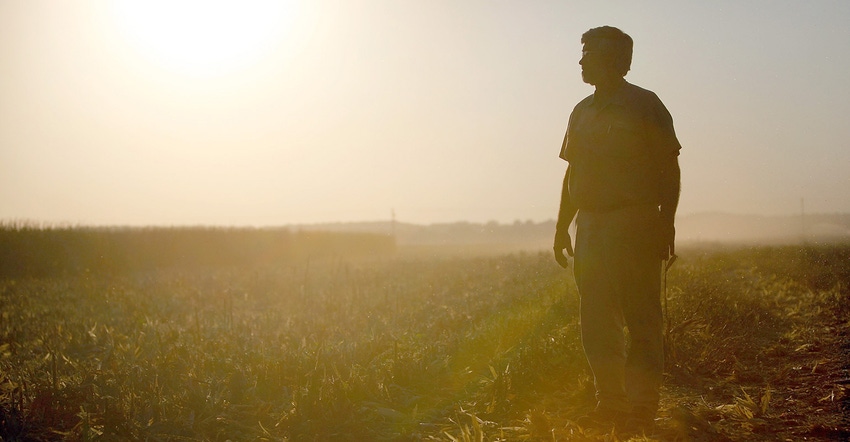December 23, 2016

A farm crisis may have silently begun in the United States, an agricultural economist with the Mississippi State University Extension Service concluded after careful consideration of commodity prices and farm costs.
“2013 was the last year of relatively high commodity prices. At that same time, during the run-up of commodity prices from the mid-2000s to 2013, input costs went up,” said Bryon Parman, Extension agricultural economist. “Now, commodity prices have come down, but input costs have not come down nearly as fast.
“We’ve had a couple years in a row now of negative returns for farmers,” he said. “They’ve lost money per acre, especially those who are renting land.”
Whether or not people realize it, the financial viability of farms matters to everybody.
“The countries of the world try to grow enough food to sustain their populations, but the U.S. grows far more food than we need,” Parman said. “If you ever are at the mercy of war, politics or something similar, that causes food shortages.
“The most vulnerable farms are those that are highly leveraged, with most farms still in decent financial shape. However, should enough vulnerable farms be forced into bankruptcy, it could very easily put farms previously considered financially sound in jeopardy through rapid asset devaluation,” he said.
Agriculture is a significant Mississippi industry, and if that sector is hurt, many jobs and local economies will be in big trouble, Parman said.
Annual study
Parman recently completed his annual study of farm revenues and profitability, which is published through the MSU Extension Service. That study shows a lot of red in the financial columns of Mississippi farms.
First, Parman calculated the cost of production for corn, cotton and soybeans, with separate calculations for irrigated and nonirrigated crops and production in the Delta and non-Delta areas. He also calculated the cost of production for rice, sorghum, wheat, peanuts and sweet potatoes. Parman tallied typical land costs and average yield expectations, and he based his figures on forecasted prices for each commodity.
Parman’s charts show a high potential for negative returns — what regular folks call losses.
“We’re not covering the all-in, all-expenses cost of farming. We’re barely covering expenses,” he said. “Where we really get into the danger zone is when you can’t cover the costs. That’s when it’s better to leave the field fallow and not even plant.”
For example, consider a scenario in which cotton brings 60 cents a pound. When all expenses are added in — including irrigation and land costs — growers would have to yield 1,430 pounds an acre to make a profit. However, Mississippi’s average yield for irrigated cotton is 1,100 pounds per acre.
Or consider irrigated soybeans grown in the Delta at an expected price of $8.98 a bushel. Growers would have to harvest an unrealistic 78 bushels an acre to come out ahead. An average of 54 bushels an acre is typical.
“Commodity prices and operating costs are such that it’s difficult to make any profit now,” Parman said. “One of the challenges we face in Mississippi is a lot of farmers aren’t aware of what it actually costs to produce their crops, and they get a shock when they go to the bank.”
Spring borrowing
Producers see their bankers each spring to get operating loans, which is cash borrowed to produce the next crop. Growing a crop is extremely expensive, and it is an accepted part of farming to pay off in the fall the money borrowed in the spring.
“On a typical Delta farm with 3,000 acres of cotton, corn and soybeans, you could have an operating line of up $2.33 million for all costs to carry you through harvest,” Parman said. “You sell your grain in the fall, pay off the operating line, and your living expenses come out of what is left.
“In farming, you have to keep getting the operating loans, and to do that, you have to have paid off the previous year’s operating loan and be current on all long-term debt to get the next year’s loan,” he said.
If a farm ends up in the red one year, a common practice is to transfer the shortfall into long-term debt by borrowing against the land. In years past, land prices have always gone up, making it possible to borrow significantly against that asset.
“There are a lot of young people in the lending and farming communities who have never seen land values and equipment values decline,” Parman said. “In the 1980s, land values dropped by as much as 60 percent or more of the overall value in a very short time. Since then, land has gone no direction but up. But land is only worth what it can generate in income.”
So at a time when low commodity prices are making low or no profits, farmers are having a hard time paying off their operating loans.
“According to my survey, on average, 21 percent of Mississippi farms from 2015 to 2016 were unable to pay off their operating loan from crop sales,” Parman said.
Compounding the problem is the fact that when commodity prices were high in the last few years, many farmers borrowed money for new equipment purchases. At the time, it seemed like a good idea for tax depreciation purposes, but when commodity prices dropped, producers still had to make the payments on that equipment.
Farmland recession
“Farmland is in recession right now,” Parman said. “The last couple of years, there’s actually been a decline in land values, and there are few land sales going on right now. Borrowing against land when it is highly valuable is not a big deal, but it will also decline in value if you have to keep borrowing against it.”
Keith Coble, head of the MSU Department of Agricultural Economics, said farm programs, defined in every farm bill passed by Congress, mitigate some, but not all, of the red ink.
“What we expect to get from farm programs varies greatly by farm crop,” Coble said. “For anybody covered by the Agriculture Risk Coverage program, it has been a significant level of protection, but the structure of the program will lead to less protection in 2017 and beyond.
“The bottom line is that there’s been a shift away from traditional programs towards crop insurance,” he said. “This will help but will not turn that red ink into black ink completely.”
Find the “Farm Revenues and Profitability for Mississippi Row Crop Producers: 2016” report at https://goo.gl/8sQ5PM.
About the Author(s)
You May Also Like






